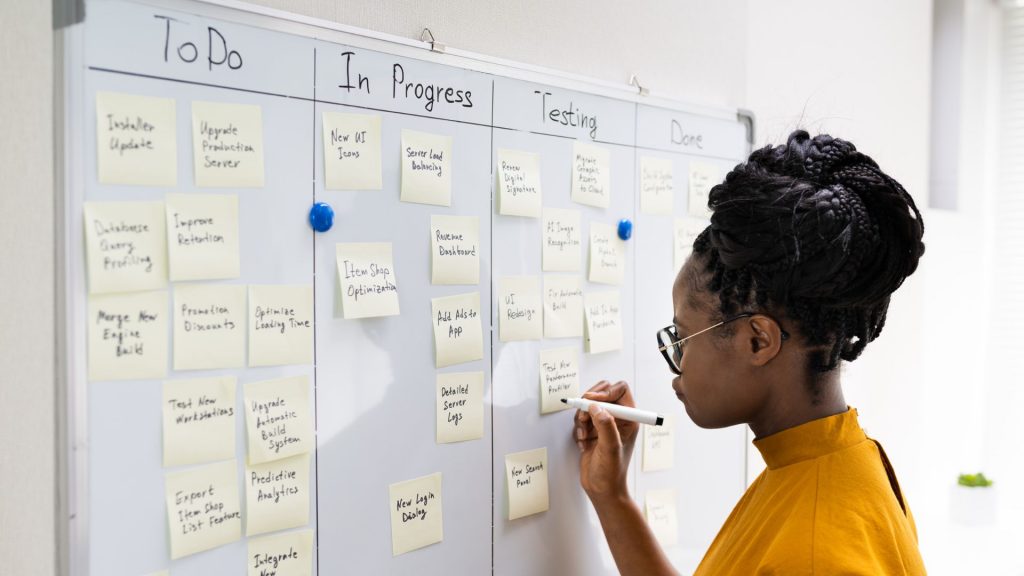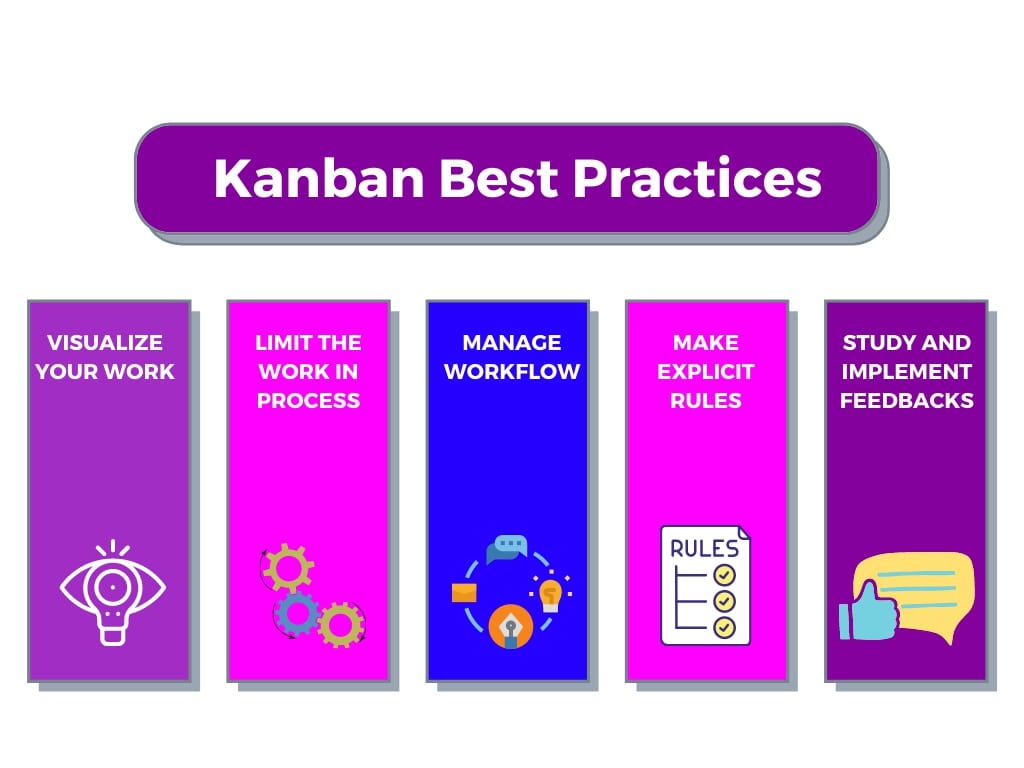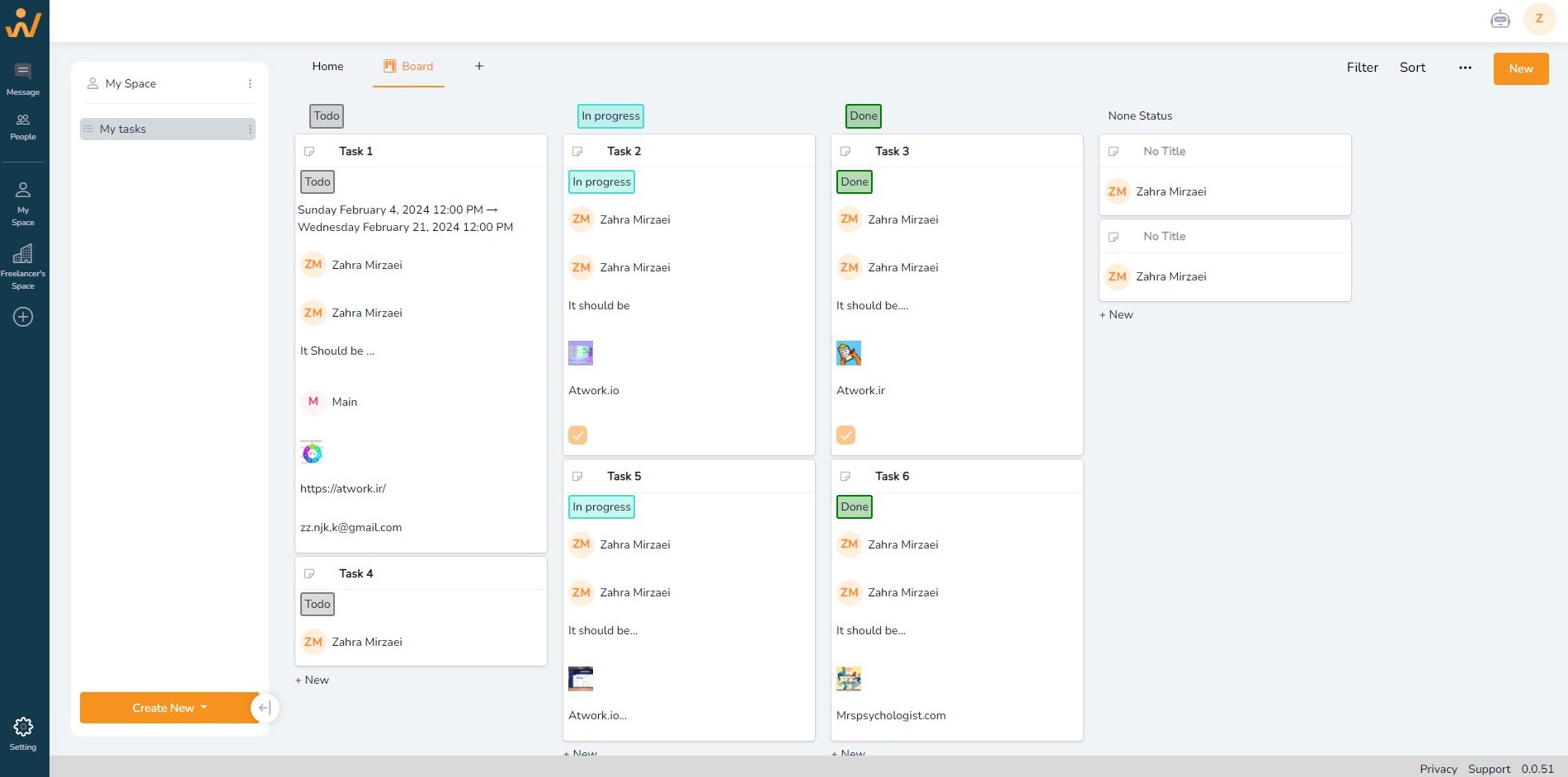Introduction to Kanban

Introduction to Kanban
Kanban is a popular way to organize work in software development. It’s all about keeping track of tasks and making sure everyone knows what’s going on. With a Kanban board, tasks are shown visually, so everyone can see what’s being worked on.
What is Kanban?
Kanban is super popular in today’s software teams that work in an agile and DevOps way. But did you know that the idea of Kanban has been around for more than 50 years? Back in the late 1940s, Toyota started improving how they did things using a method similar to what supermarkets were doing to stock their shelves. Supermarkets only keep enough products to meet what customers want, so they don’t have too much extra stock sitting around. This helps them manage their inventory better and still make sure they always have what customers need in stock. When Toyota brought this system into their factories, the goal was to match their large inventory levels with what was actually needed. To keep track of their capacity in real-time, workers passed around special cards called “kanbans” between teams.

When a bin of materials on the production line was empty, they’d send a kanban to the warehouse detailing what material was needed and how much. The warehouse would then prepare a new bin to send to the factory floor, while also sending their own kanban to the supplier. The supplier would have a bin of that material ready to send to the warehouse. While the technology for signaling has changed over time, the core idea of this “just in time” manufacturing process remains the same.
High-level Organization Chart – Advanced Roadmaps
In the realm of project management, Advanced Roadmaps stand out as powerful tools for high-level organization and planning. With their capability to streamline planning, management, and tracking across multiple teams or even entire organizations, Advanced Roadmaps offer a comprehensive solution for navigating complex projects and ensuring alignment with overarching goals.
Quick and Easy Planning:
Advanced Roadmaps provide teams with a quick and efficient way to plan their projects. By offering intuitive tools and features, teams can easily map out their timelines, dependencies, and milestones. This streamlined planning process enables teams to establish clear objectives and allocate resources effectively from the outset.
Dependency Management:
One of the key features of Advanced Roadmaps is their ability to help teams manage dependencies effectively. By visualizing dependencies between tasks, teams can identify potential bottlenecks and proactively address them. This ensures smoother workflow execution and reduces the risk of delays or disruptions down the line.
Real-time Progress Tracking:
Keeping track of progress is essential for staying on top of project timelines and milestones. Advanced Roadmaps offer real-time tracking capabilities, allowing teams to monitor progress and adjust plans as needed. With up-to-date insights into task completion and overall project status, teams can make informed decisions and course corrections to keep projects on track.
Project and Team-Level Roadmaps:
Whether planning at the project or team level, Advanced Roadmaps cater to the diverse needs of organizations. Project-level roadmaps provide a comprehensive overview of large pieces of work, enabling teams to understand the scope and dependencies of individual projects. Meanwhile, team-level roadmaps offer a more focused view, facilitating detailed planning and execution for specific teams or initiatives.
Empowering Teams at Scale:
Perhaps most importantly, Advanced Roadmaps empower teams to collaborate and coordinate effectively at scale. By providing a centralized platform for planning and tracking work across teams or the entire organization, Advanced Roadmaps foster alignment, transparency, and collaboration. This enables teams to work cohesively towards shared goals and drive success at every level of the organization.

Advanced Roadmaps offer a robust solution for high-level organization and planning, enabling teams to better manage dependencies, track progress, and achieve success in complex projects. With their user-friendly interface, powerful features, and scalability, Advanced Roadmaps are a valuable asset for any organization striving for efficient and effective project management.
What is a Kanban Card?
In the world of Kanban, work items are symbolized by what we call “Kanban cards.” Think of these as virtual sticky notes on a digital or physical board. When organizations adopt Kanban, they often begin by setting up a physical Kanban board that mirrors their existing workflow process.

Each card, whether it’s a physical sticky note or a digital representation, signifies one specific work item. These cards contain essential information about the task at hand, such as its description, priority, assigned team member, and status. As work progresses, these cards move across the Kanban board, reflecting the current state of each task within the workflow.
For a more detailed understanding of how Kanban cards function and their role within the Kanban methodology, we recommend diving into our comprehensive article Introduction to Atwork Kanban.
See Your Work with Kanban
Make a picture of what you’re doing and how you do it. This helps everyone understand what’s going on and where things might get stuck.
Do One Thing at a Time
Try not to have too many things happening at once. It can slow things down and make it hard to finish anything. Limiting how much work is going on at once can make everything move faster.
Keep Things Flowing
Make sure work moves smoothly from start to finish. By setting rules and limits, you can make sure things keep moving and you know if there are any problems coming up.
Always Get Better
Once you’ve got your system set up, keep trying to make it better. Check how things are going, see what’s working and what’s not, and make changes to make things work even better.
Why Use Kanban?
If you’re feeling overwhelmed or like you’re not getting enough done, Kanban might help. Ask yourself:
Do you feel like you’re always juggling too many things?
Are you struggling to focus on one thing at a time?
Do you feel like you’re working hard but not seeing results?
Is your team having trouble staying organized and communicating?
If you said yes to any of these, Kanban could be a solution. Lots of people find it helps them get organized and work more efficiently.
